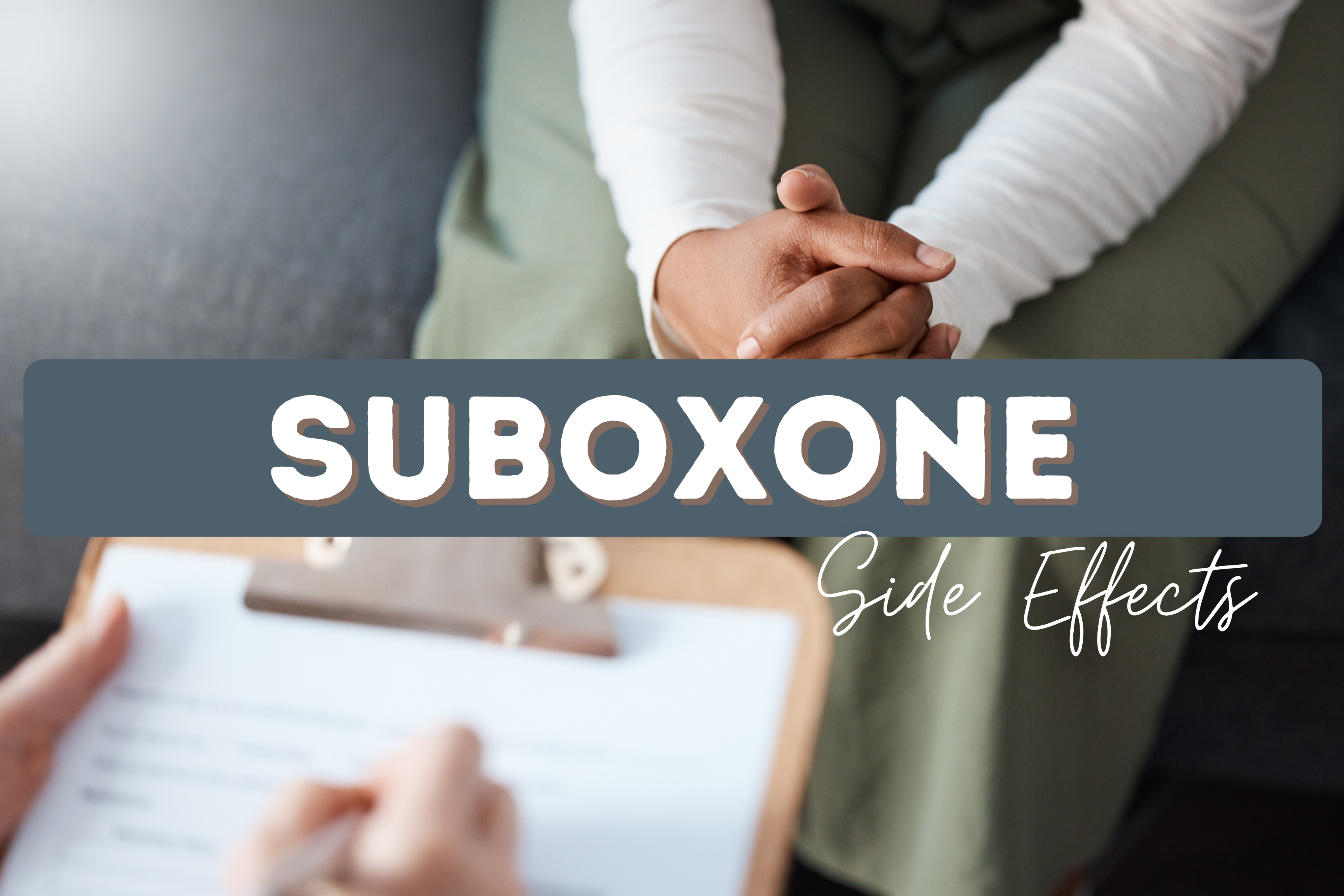Recovery from opioid use disorder (OUD) is a long-term journey that requires more than just medical stabilization. While Medication-Assisted Treatment (MAT) with medications like buprenorphine or methadone addresses the physical aspects of addiction, behavioral therapies help patients change the thought patterns and behaviors that drive opioid misuse. One of the most effective of these therapies is Cognitive Behavioral Therapy (CBT).

CBT has been studied for decades and is considered a gold standard in addiction treatment. According to the National Institute on Drug Abuse (NIDA), CBT is among the most effective therapies for individuals with substance use disorders, including opioid addiction (NIDA, 2018).
What Is Cognitive Behavioral Therapy (CBT)?
Cognitive Behavioral Therapy is a type of psychotherapy that focuses on the relationship between thoughts, feelings, and behaviors. Developed in the 1960s, CBT is rooted in the idea that distorted or unhelpful thinking patterns can influence emotions and lead to harmful behaviors like substance use.
Rather than spending years uncovering past experiences, CBT is action-oriented and time-limited. It teaches individuals practical skills they can use in their daily lives, usually within 12–16 sessions. According to Verywell Mind, CBT combines two essential elements:
– Cognitive Therapy: Identifying and challenging negative thought patterns, such as ‘I’ll never recover’ or ‘I need opioids to function.’
– Behavioral Therapy: Building healthier coping mechanisms, like stress management or problem-solving skills, to replace opioid use.
This structured approach makes CBT especially effective for people in opioid recovery, who often need immediate tools for managing cravings, stress, and high-risk situations.
Why CBT Is Effective for Opioid Addiction
Opioids impact both the body and brain. They change how the brain’s reward system works, making it difficult to resist cravings and easy to fall back into old patterns. Medications like methadone and buprenorphine stabilize brain chemistry, but they don’t address learned behaviors or distorted thinking.
That’s where CBT comes in. According to SAMHSA, combining MAT with therapies like CBT gives patients the best chance at long-term recovery. Together, these treatments address both the biological and psychological sides of addiction.

How CBT Works in Opioid Recovery
Identifying Triggers
CBT helps individuals identify the internal and external triggers that drive opioid cravings—whether it’s stress, grief, certain social settings, or reminders of past use. Recognizing these patterns is the first step in developing healthier responses.
Restructuring Negative Thoughts
Opioid addiction often feeds on distorted thinking, such as: ‘I’m too far gone to recover’ or ‘One pill won’t hurt.’ CBT teaches patients to challenge these beliefs and replace them with realistic, hopeful self-talk.
Developing Coping Skills
Stress, grief, and trauma often contribute to relapse. CBT provides tools for managing stress, solving problems, and responding to emotions without turning to opioids.
Relapse Prevention Planning
Relapse is often part of the recovery process, but CBT helps reduce its likelihood. Patients create personalized relapse prevention plans that outline warning signs, coping strategies, and sources of support.
Long-Term Impact
CBT is not just short-term. Research has shown that the tools learned in CBT continue to benefit patients months or even years after therapy ends.
Evidence Supporting CBT for OUD
– A review in the Journal of Substance Abuse Treatment found CBT effective in reducing opioid use and improving treatment engagement.
– A systematic review in JAMA Network Open concluded that combining CBT with pharmacological treatment leads to better outcomes than medication alone.
– According to the National Institute on Drug Abuse, CBT’s structured approach makes it one of the most effective therapies for opioid use disorder, especially in combination with MAT.
How Cedar Recovery Uses CBT with MAT
At Cedar Recovery, we believe in treating the whole person—not just the addiction. That’s why CBT is integrated into our services:
– MAT Program: Counseling with CBT principles strengthens the effectiveness of buprenorphine and methadone treatment.
– Suboxone Treatment: CBT helps patients address cravings and build routines that support Suboxone therapy.
– Methadone Treatment: Behavioral therapy complements methadone’s stabilization by teaching patients how to manage triggers.
– Studio Health Telemedicine (https://www.cedarrecovery.com/studio-health/): CBT counseling is accessible virtually across Tennessee, reducing barriers to care.
– CedarRx Pharmacy (https://www.cedarrecovery.com/cedar-rx/): Our in-house pharmacy ensures discreet medication support, while therapy focuses on behavioral healing.
Common Questions About CBT and Opioid Recovery
Is CBT effective for opioid addiction?
Yes. According to the National Institute on Drug Abuse, CBT is one of the most effective therapies for opioid use disorder, especially when combined with MAT.
How long does CBT take?
Most CBT programs are short-term, usually 12–16 weeks, but the skills can be applied for a lifetime.
Can CBT be done online?
Yes. Cedar Recovery provides CBT counseling through Studio Health telemedicine so Tennessee patients who are not located near our physical offices can access therapy as part of their addiction treatment.
Does CBT replace medication?
No. CBT is most effective when paired with MAT, addressing both the psychological and biological sides of opioid addiction.
Can CBT help after a relapse?
Yes. CBT reframes relapse as a learning opportunity, helping patients analyze what triggered it and strengthen their recovery plan.
A Path to Long-Term Recovery
CBT is more than therapy—it’s a toolkit for life. By teaching individuals how to identify triggers, reshape thought patterns, and build healthier coping strategies, CBT supports long-term recovery from opioid addiction.
At Cedar Recovery, we integrate CBT with evidence-based MAT, peer support, and compassionate care to help patients feel better, get better, and stay better. Contact us today to learn more and get started on your recovery journey.
References
- Magill, M., & Ray, L. A. (2009). Cognitive-behavioral treatment for substance use disorders: Evidence-based applications. Journal of Substance Abuse Treatment, 36(1), 57–66. https://doi.org/10.1016/j.jsat.2008.06.016
- McHugh, R. K., Hearon, B. A., & Otto, M. W. (2010). Cognitive behavioral therapy for substance use disorders. Psychiatric Clinics of North America, 33(3), 511–525. https://doi.org/10.1016/j.psc.2010.04.012
- National Institute on Drug Abuse. (2018). Principles of drug addiction treatment: A research-based guide (3rd ed.). https://nida.nih.gov/publications/principles-drug-addiction-treatment-research-based-guide-third-edition
- Substance Abuse and Mental Health Services Administration. (n.d.). Medication-assisted treatment (MAT). https://www.samhsa.gov/medication-assisted-treatment
- Verywell Mind. (2023). Can cognitive behavioral therapy (CBT) treat alcoholism and drug addiction? https://www.verywellmind.com/cognitive-behavior-therapy-for-addiction-67893




